The Chinese pangolin (Manis pentadactyla) lives in colder, higher elevations than most pangolins and appears to be the only pangolin species that “hibernates” (although not considered a true hibernation, it’s actually more of an “overwintering”)!
Weighing in at around two to seven kilograms and reaching lengths of 70-127 centimeters (about 27-50 inches), these scaly anteaters spend their winters nestled in deep burrows near termite mounds, which provide them with a food source for the cold season.
During this time, females give birth to a single offspring, which they nurture until they emerge together in the spring. Although babies can walk on their own, they are carried around on their mother’s tail – much like other pangolin species.
Manis pentadactyla inhabits a variety of habitats, including primary and secondary tropical forests, limestone forests, bamboo forests, grasslands, and even agricultural fields and grasslands. They may dig underground burrows, and also utilize burrows created by other animals or even occasionally enlarge subterranean termite passages to make their own.
In China, their distribution is closely tied to that of two particular termite species (Coptotermes formosanus and Termes (Cyclotermes) formosanus) – both major components of this mammal’s diet.
As you’ve probably guessed, the Chinese pangolin is predominantly terrestrial, but they are fully capable of climbing trees. Unfortunately, their terrestrial nature seems to make them more susceptible to (illegal) hunting than other more arboreal species, such as the Sunda pangolin. In fact, overhunting — for international trade in their scales, meat, and other body parts — is the lead cause of the pangolin’s escalating plight.
Chinese pangolins are solitary, mainly nocturnal creatures, although they may sometimes be active at dusk and dawn. Little is known about this species’ life history, but it is believed that they reach sexual maturity around one year of age and that they mate over a period of three to five days – usually in the late summer and early autumn.
- IUCN Conservation Status: Endangered (since 2008)
- Protection: Protected by national or subnational legislation in many range states and also protected from international trade under CITES Appendix II with a zero export quota
- Range: Bangladesh, Bhutan, China, Hong Kong, India, Lao PDR, Myanmar, Nepal, Taiwan, Thailand, and Vietnam
Described as being common in some parts of its range as recently as the 1980s, the Chinese pangolin is now suffering dramatic declines throughout their range. In fact, in Vietnam and Laos, they are now considered to be extremely rare and may be dangerously close to extinction in the latter, if they are not already.
Sadly, there is virtually no information available about the population sizes of any of the Asian pangolin species.
Their scales, blood, and other body parts are in high demand in traditional Chinese medicines, and their highly sought after flesh is consumed in China as a delicacy, or to acquire perceived “health benefits”. However, there is no scientific evidence to back the medicinal claims made about these animals.
Increased law enforcement, strong penalties for offenders, and further research are all urgently needed to help this species persist into the future. It seems the Chinese pangolin (as well as all other pangolin species) would benefit greatly from being uplisted to Appendix I of the Convention on International Trade in Endangered Species (CITES).
Fun facts about the Chinese pangolin
- They walk on their knuckles with their claws folded under, which makes for some unique spoor!
- Their claws can reach up to five centimeters in length.
- In Mandarin, they are called ‘Long Li’, which means “hill carp” (referring to the their scales being somewhat similar to those of the Chinese carp).
Sources:
“Manis pentadactyla,” International Union for the Conservation of Nature Red List of Threatened Species, accessed 28 January, 2012
“Chinese pangolin (Manis pentactyla),” Arkive, accessed 28 January, 2012
Zoological Society of London. “91. Chinese Pangolin (Manis pentadactyla),” Evolutionarily Distinct & Globally Endangered (EDGE), accessed 28 January, 2012
Image #1 via Wikimedia Commons
Image #2 via Wikimedia Commons, with range added by author


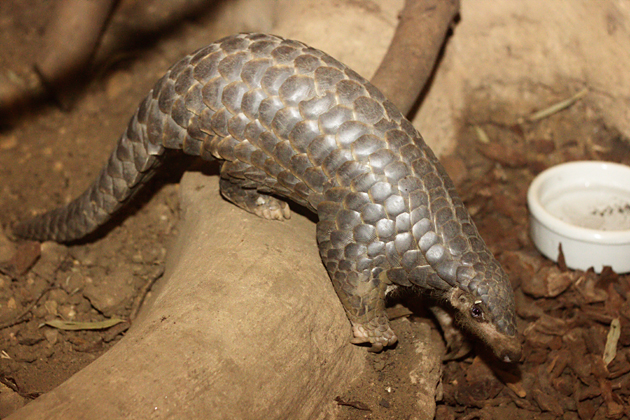
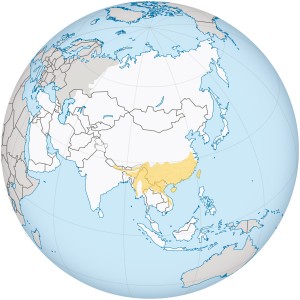
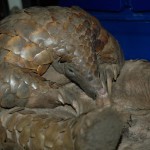
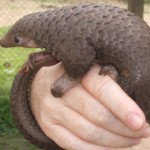
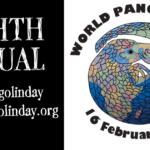

1 Comment
Comments are closed.